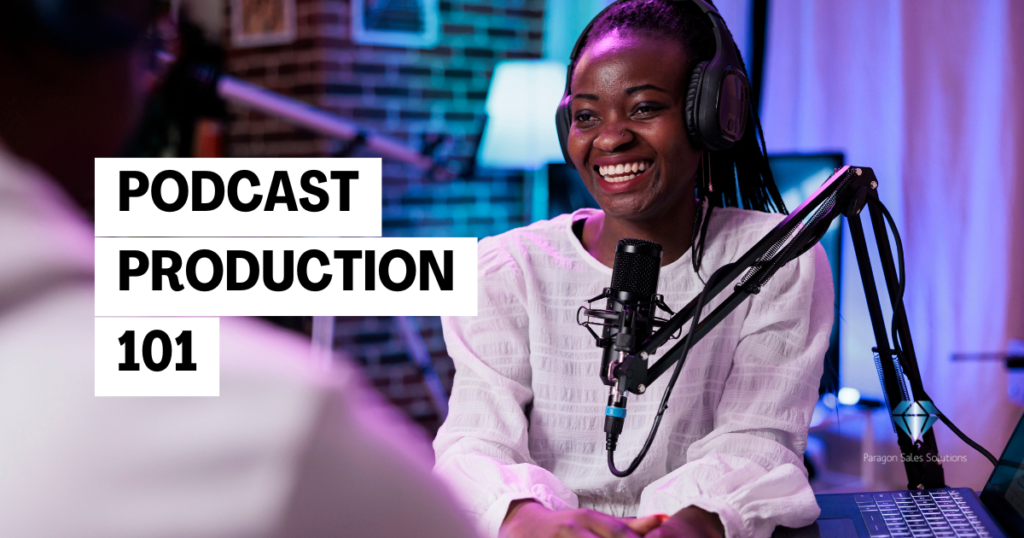Podcasting has become a powerful tool for businesses, entrepreneurs, and content creators looking to connect with their audience in a meaningful and engaging way. But while starting a podcast might seem simple, producing a high-quality show that captures attention and drives results requires planning, strategy, and the right tools. In this blog, we’ll cover Podcast Production 101, giving you a step-by-step guide to launching and running a successful podcast.
1. Defining Your Podcast Concept
Before you hit record, you need to define what your podcast is about and who it’s for.
✅ Choose a niche – What industry, topic, or passion will your podcast focus on? ✅ Identify your target audience – Who will benefit most from your content? ✅ Define your podcast’s purpose – Is it educational, entertaining, or industry-focused? ✅ Select a format – Interview-based, solo episodes, roundtable discussions, or storytelling?
A well-defined concept ensures your podcast stands out and attracts the right listeners.
2. Planning Your Episodes
Consistency is key in podcasting. Plan your first 5–10 episodes to stay organised.
✅ Create an episode structure – Intro, main content, outro, and call-to-action. ✅ Write an outline – Helps you stay focused without sounding scripted. ✅ Decide on episode length – Typically 20–60 minutes, depending on content depth. ✅ Plan guest interviews – If relevant, start reaching out to potential guests.
Having a clear plan makes the recording process smoother and more efficient.
3. Setting Up Your Recording Equipment
Good audio quality is essential for a professional-sounding podcast. Basic equipment includes:
✅ Microphone – A good USB or XLR microphone improves sound quality. ✅ Headphones – Helps with monitoring sound and reducing background noise. ✅ Pop filter – Reduces harsh “P” and “S” sounds. ✅ Audio interface – If using an XLR mic, an interface connects it to your computer. ✅ Recording software – Free options include Audacity and GarageBand; premium options include Adobe Audition.
Investing in quality equipment enhances the listening experience and boosts credibility.
4. Recording and Editing Your Podcast
Once you have your equipment set up, it’s time to start recording.
✅ Find a quiet space – Background noise can ruin audio quality. ✅ Use a script or bullet points – Keeps the conversation natural yet structured. ✅ Record in segments – Easier to edit mistakes and refine sections. ✅ Edit your audio – Remove background noise, filler words, and awkward pauses.
Editing tools like Audacity, Adobe Audition, or Descript make it easy to polish your podcast.
5. Publishing and Distributing Your Podcast
Once your episodes are ready, it’s time to publish them.
✅ Choose a podcast hosting platform – Buzzsprout, Anchor, Podbean, or Captivate. ✅ Submit to directories – Apple Podcasts, Spotify, Google Podcasts, Amazon Music. ✅ Create a compelling title and description – Helps with discoverability and SEO. ✅ Use eye-catching podcast cover art – First impressions matter!
Publishing on multiple platforms increases your reach and audience growth.
6. Promoting Your Podcast for Maximum Reach
Simply uploading episodes isn’t enough—you need to market your podcast.
✅ Promote on social media – Share clips, teasers, and behind-the-scenes content. ✅ Leverage email marketing – Send updates to your subscriber list. ✅ Collaborate with guests – Ask them to share the episode with their audience. ✅ Repurpose content – Turn podcast highlights into blog posts, videos, or infographics.
A strong promotion strategy ensures your podcast gains traction and builds a loyal audience.
Conclusion
Starting a podcast requires careful planning, quality recording, and consistent promotion. By following these steps, you can create a high-quality podcast that attracts listeners, builds authority, and supports your business growth.
To learn more about how Paragon Sales Solutions can help with podcast production, please get in touch or book your FREE consultation.

